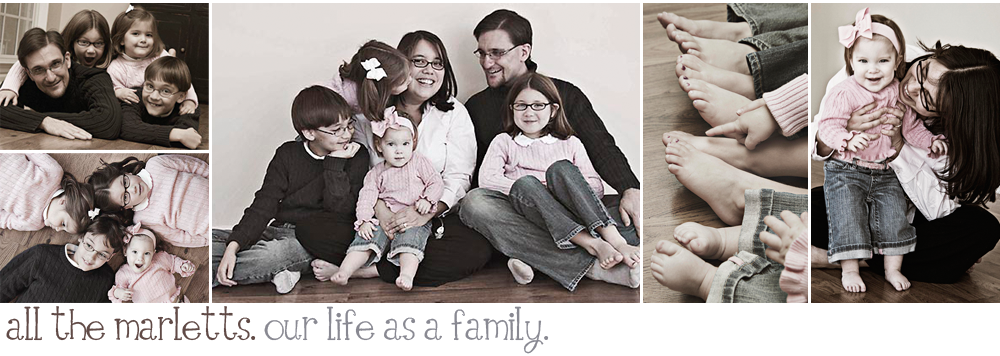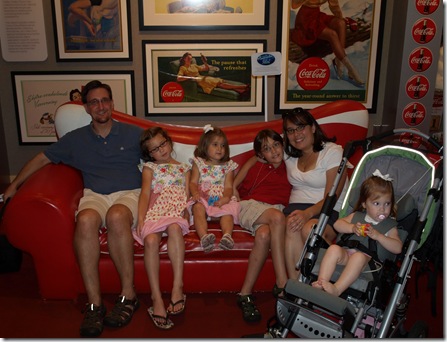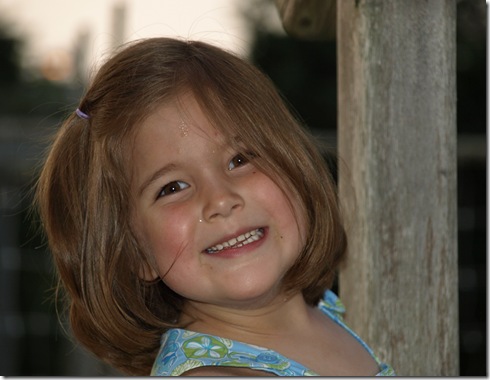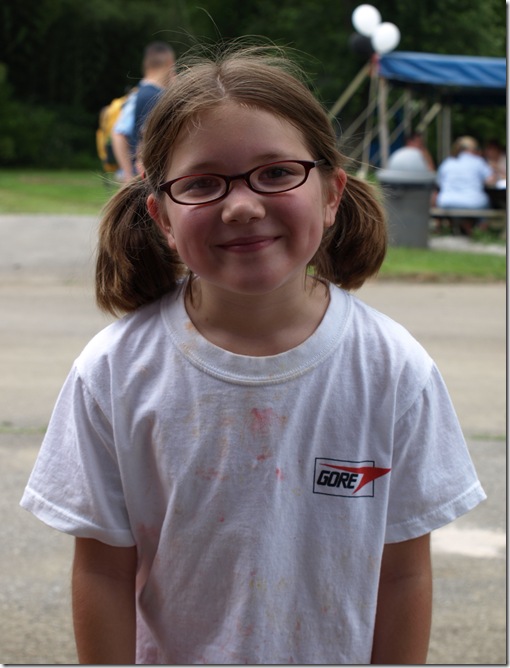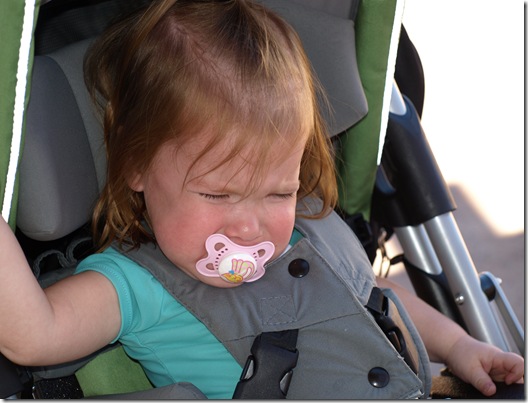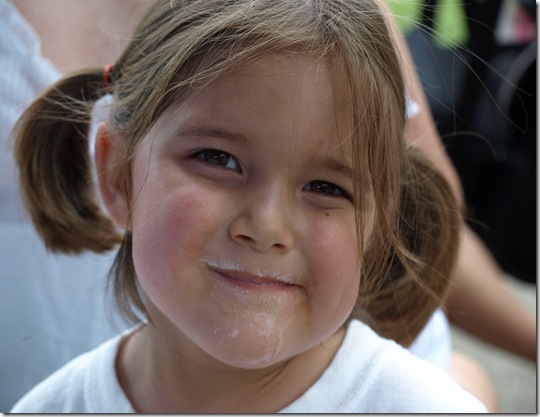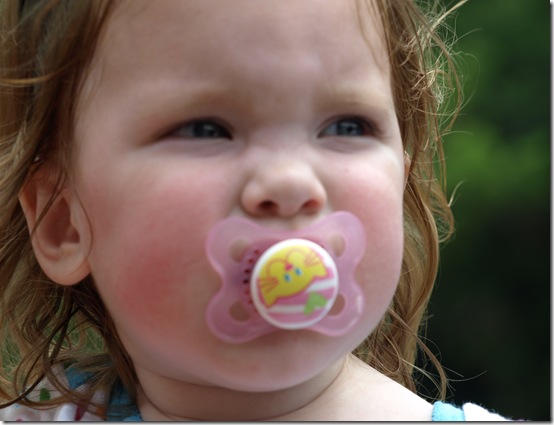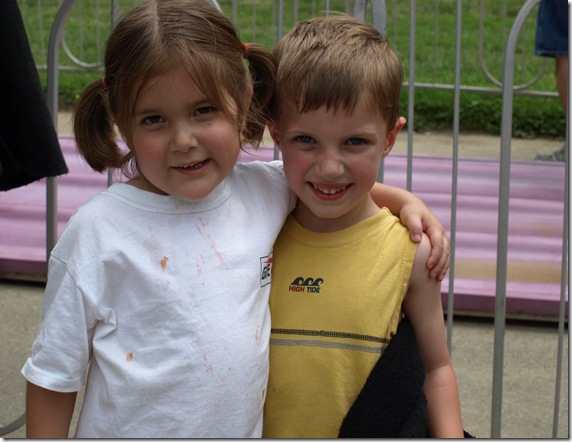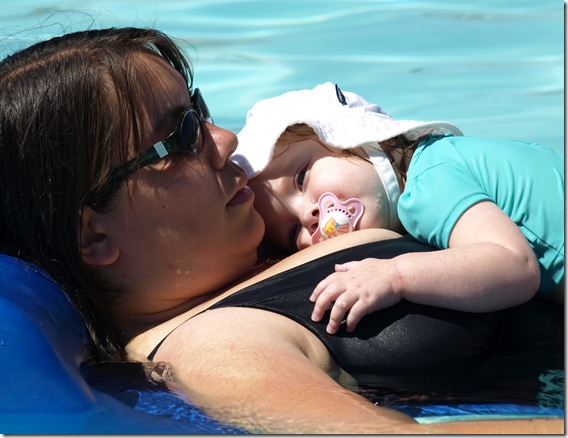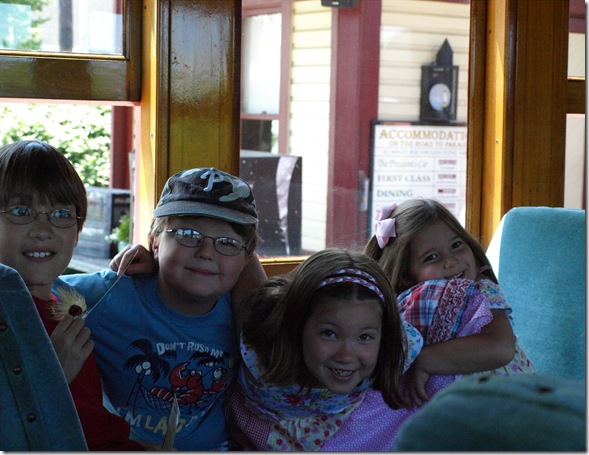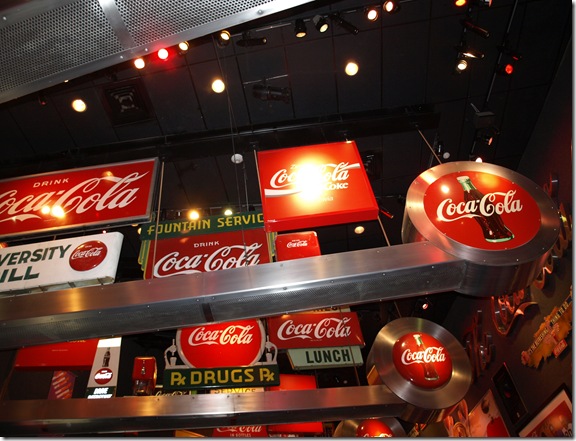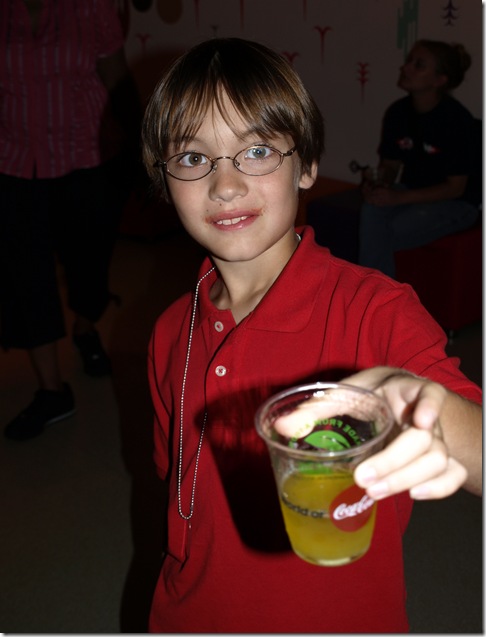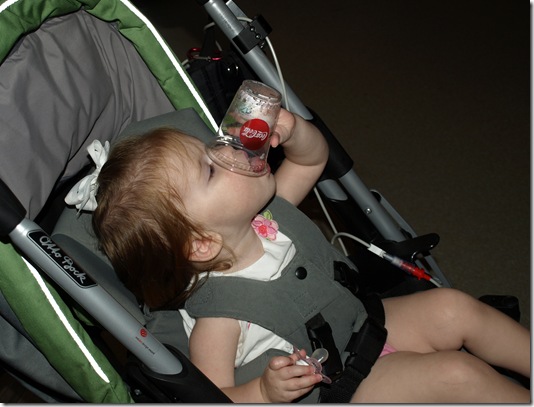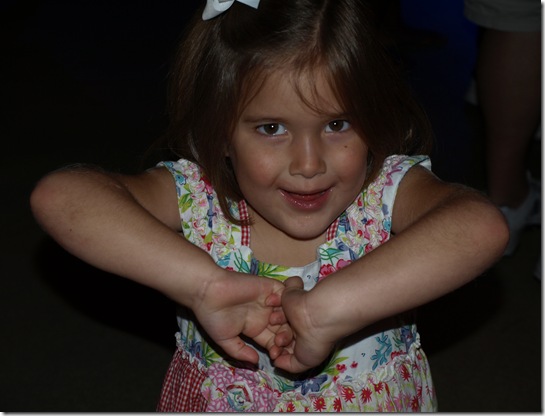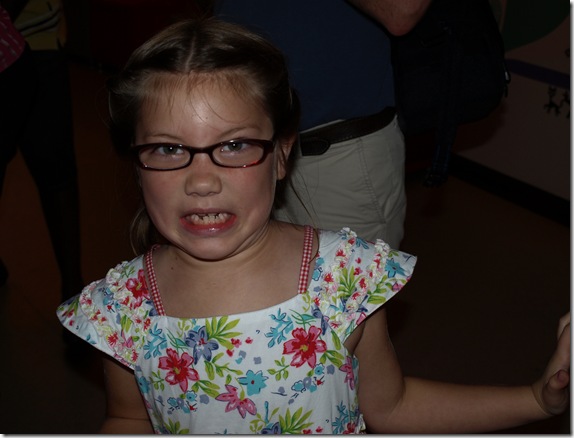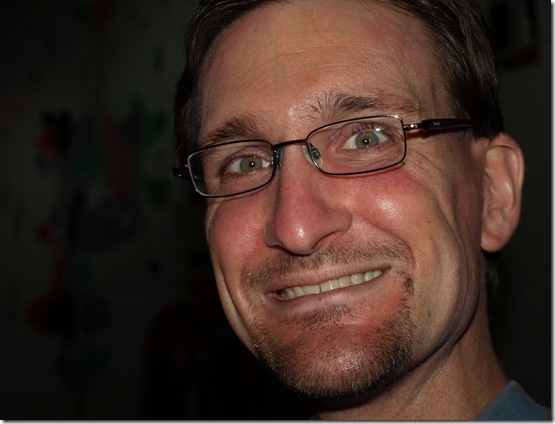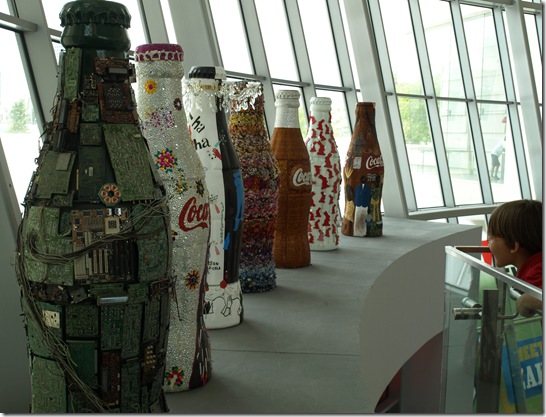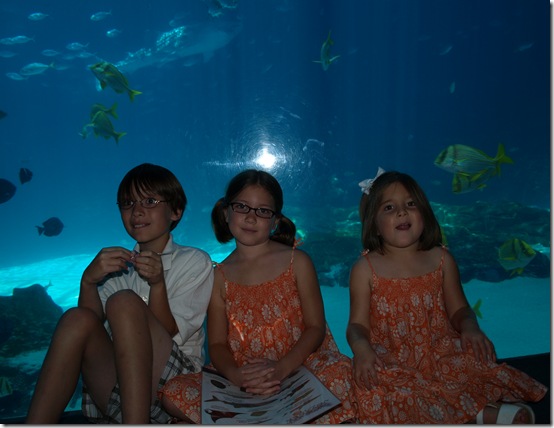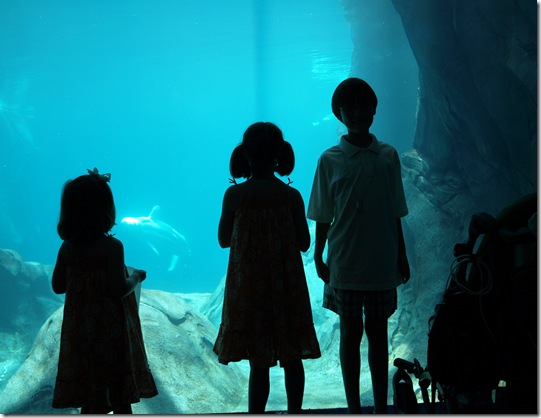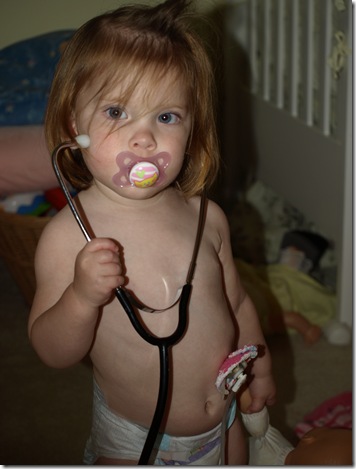I am going to do my best to recap all of the events from the 2010 Mitochondrial Medicine Symposium that took place in Scottsdale, Arizona at the JW Marriott Camelback Inn Resort, where yes indeed it was hot and dry. I had an awful time trying to stay hydrated in spite of the excessive amount of fluids that I was drinking. By the second day, I was loosing my voice and developed a choking nagging cough that was very annoying not just for me but for those around me. Sorry!
Drew, Lucy and I boarded a flight to Arizona at 7:00 AM Wednesday morning, which meant that we left our home at 4:30 AM (nuts I know, but we planned this on purpose hoping that Lucy would sleep for some of the flight)! Three suitcases one solely devoted to our daughters medical records, one wheelchair, Lucy’s car seat and base, our laptop bag, diaper bag, feeding pump, one insulated princess lunchbox full of a days supply of formula and medicines, three quart size bags of medicine for security to have to inspect, and our sanity later we were on our way. Lucy did well on our flights thanks in part to her being buckled in to her car seat, and having a Vitamin Water bottle to play with. Lucy loves to screw the lids on and off of bottles, don’t ask me why, she just does. I left some of the purple water in the bottle for her to shake and swirl which entertained her for quite some time until she tipped it upside down and took off the cap. We changed plans in Memphis where we also changed clothes and ran like the dickens to catch or connecting flight. When we arrived in Phoenix we quickly learned that the airline had damaged Lucy’s wheelchair..ugh! We suspect that someone dropped it on its side and bent the frame just enough to where we have to manually push it into place to lock it. Her seat is heavy and weighs sixty pounds, one of the stipulations to getting her chair was whether or not I could physically lift it. Delta was apologetic and had two of their mechanics look at it to see if they could fix it. Admitting that they would probably do more harm than good they left it alone and agreed to pay for the damages when we take the seat back to our wheelchair clinic to be repaired. I just need to add wheelchair clinic to my list of too many things that I have to do now that we are home.
On Thursday Lucy woke us at sunrise, she was clearly on east coast time. We spent the morning talking a walk, getting in some cardio, and briefly lounging by the pool. Lucy is suddenly more sensory averse to swimming, she has about a five to ten minute tolerance in the water before she starts screaming like she is on fire. By 9:50 we were ready for lunch and nap time, unfortunately the pool side restaurant did not open until 11:00. Oh well, we had a lovely brunch in the main hotel restaurant where they kept brining Lucy small boxes of Cheerios to keep her happy. We took the hint loud and clear and ate quickly, as dining out with Lucy is truly an experience like no other. Thursday afternoon after nap time we walked over to the main conference area and registered for the “ask the mito doc” segment of the conference. We signed up to meet with a Dr. K from Huston who we had heard wonderful things about. We also were invited by a member of the UMDF staff to meet with a geneticist from CHOP, Dr. F. We were asked to share some our experiences with getting Lucy’s diagnosis with this doctor. She was wonderful and offered to see Lucy in clinic if need be. She raved about Dr. R, our newest go to Mito doctor at DuPont, saying that he is remarkable and that we are in very good hands with him on our team! This meeting alone clarified so many issues for us and made us feel better about some of our experiences we have had on this journey. Our meeting with Dr. K was interesting in that Lucy was an absolute cranky pants and showed off her very irritable side. We were discussing Lucy’s irritably with Dr. K as it was such an obvious issue, when she asked us about Lucy’s ammonia levels. She told us that increased ammonia levels in mito kids can cause irritability. In her clinic they treat kids with elevated ammonia levels with Lactalose or L-arginine. She told us that she has seen dramatic changes in some of her patients and encouraged us to look into this as a possible cause to our little one’s irritability. We will discuss this with Dr. R when we see him in clinic.
Friday morning we were up bright and early again eager to attend the sessions on Clinical Trials in Mitochondrial Disease, Latest concepts in Mitochondrial Disease, and Palliative care, GI Issues and Dysmotility, Providing Nutritional Support, and Fundraising to Support the UMDF Mission.
There was a lot of discussion about clinical trials and the importance of participating in a clinical trial to help with the advancement of treatments for mitochondrial disease. Currently there are NO FDA approved treatments for mitochondrial disease. Clinical trials are the ONLY way for obtaining FDA approval. FDA approval would mean that there would be a standard of care for mito patients, which in turn could lead to better insurance coverage for treatments. They discussed three clinical trials currently taking place; one which is looking at the effectiveness of CoQ10 as a treatment for mito patients, and the other two are specific for patients with MELAS. We are looking at participating in the Phase III CoQ10 trials.
Genetics is a very confusing topic in mitochondrial disease and was a big part of the discussion on The Latest Concepts in Mitochondrial Disease. Mitochondrial genetics are inherited in one of two ways. One is from your mitochondrial DNA which only comes from the mother. The other way is from your nuclear DNA which are inherited autosomal recessively, meaning from both the mom and the dad. This is the most common inheritance pattern. There is genetic testing available for both mitochondrial and nuclear genetics. However, there are limitations to how many known defects doctors can actually say for sure are mitochondrial disease related. There are 16,569 mitochondrial DNA variants, but doctors know of less than 90 that are mitochondrial disease specific. For nuclear DNA there are over 3 billion variants in the human genome. Genetic testing which looks at the entire human genome will make it possible to compare the genetics of a patient with mitochondrial disease to a standard sample with no mitochondrial(nuclear or mitochondrial DNA) abnormalities, thus making it possible to pin point where in ones DNA a mutation lies. Scientists are very close to having this become available clinically, perhaps in the next four to five years. Cost wise this type of testing is expensive; however, when you compare it to all of the tests currently used for diagnosing mitochondrial disorders it is comparable. A researcher at St. Christopher’s Hospital for Children in Philadelphia is using buccal swabs( buccal epithelial cells from saliva from the cheek) and testing the saliva for mutations that are linked to mitochondrial disease with results that correlate with muscle biopsy results. From what I understand, this type of testing can indicate a possible complex I or IV defect. Treatments for mitochondrial disease are symptom related not usually mutation specific, but knowing where your genetic defect lies can be important on many levels. Still, the “gold standard” for diagnosing mitochondrial disease is a muscle biopsy.
We attended the seminar on Palliative Care and the director of Palliative Care from Akron Children’s Hospital Dr. Sara Friebert presented this topic. She defined palliative care as “seeking to prevent or relieve the symptoms produced by a complex, chronic and/or life threatening medical condition or its treatment. It helps children with such conditions and their families live as normally as possible by addressing physical/medical, emotional/psychological, social practical, spiritual, cognitive/developmental, and educational/vocational domains of suffering. And provides them with timely and accurate information and support in decision making.” Palliative care is not hospice care, but can include hospice care. She specifically discussed palliative care and mitochondrial disease and made so many poignant points that I know we were wondering how we could benefit from it. Afterwards, I learned that DuPont Children’s Hospital is going to be implementing a palliative care program sometime in the very near future.
The topic on GI issues and dysmotility was one of the seminars I was most interested in since our little one struggles so much with this. A geneticist from Children's Hospital of Los Angeles Dr. Richard Boles was asked to speak on the subject since every year that he has attended the conference he has mentioned the need to address GI issues. He spoke broadly on the types of GI issues many mito patients suffer with: dysmotility, abdominal pain, and growth retardation. He highlighted that there are few to no studies done on these issues, and that is not acceptable! We need to advocate for more research on the subject! There are varying degrees of GI issues and symptoms of those issues in mito patients that it was difficult to relate specifically to the information that he was giving. As a result he had several case studies which described patients with varying symptoms. I think the subject of GI dysmotility could be an entire conference on its own! I left the seminar feeling more concerned about our little one, mostly because she seemed to be the abnormal or the extreme in his descriptions of the issues. I did however meet several families who could relate to many of the same GI issues we are dealing with on a daily basis. Even more valuable than hearing the experts discuss the issues, is hearing how real people are dealing with these issues!
The topic of nutritional support for mito patients was nothing I haven’t heard before. Getting Lucy to grow has been the focus of our life for the past two plus years! What I took away from the information was due to the varying degrees of GI dysmotility there are varying degrees to which mito patients are getting their nutritional needs met either orally, by g-tube, or IV nutrition or a combination of these. Again the subject material was informative but broad.
The Fundraising to Support the UMDF seminar was positive . Overall, the impression I received from the UMDF was one of hope and optimism that with our efforts we will be one step closer to finding a cure. The UMDF has staff and information to help support anyone in their efforts to raise funds, and they are very willing to help you! The Energy for Life Walkathon is being branded as THE WALK for mitochondrial disease. The company that helped to make several of the top ten walks in the county so successful has donated their expertise to the UMDF to help our walk become universal and nationally recognized. You can count on hearing more about the DelVal Energy for Life Walkathon in my future posts!
Saturday we attended the seminars on Exercise, Behavior Management, Screening, Evaluation, and Treatment of Mitochondrial Disorders, Hot Topics in Mitochondrial disease, and the Closing of the Family Program.
The seminar on Exercise by a Dr. Tarnopolsky was very informative. He had compelling evidence of the benefits of exercise for all people, but in particular patients with mitochondrial disease. Lab mice with a know mitochondrial defect demonstrated that with endurance exercise at least three times a week for thirty minutes a day they were healthier, and lived longer than those mice with the same mitochondrial defect who were not exercised. His recommendations were to exercise to your abilities and gradually increase the intensity and duration. Patients with mitochondrial disease need to take extra time(10 minutes) between sets in resistance exercise to avoid oxidative stress to the muscle tissue. Exercise helps the mitochondria regenerate and fill in for the damaged mitochondria. Dr. Tarnopolsky encouraged the website www.pubmed.org to read more about reputable published studies in the scientific community. I found many articles published by him, but could not specifically find the lab mice study he described.
The discussion on behavior management was broad reaching and informative. It drove home the point that communicating information with others about your child and their disease is essential in setting and achieving goals for behavior management. Mitochondrial disease is often an invisible disease and is difficult for others to “see” the issues your child is experiencing. What I really wanted was to take the speaker back home with us and have her explain to our daughters team the issues that having mitochondrial disease presents. She was persuasive, but unfortunately from California not Pennsylvania.
Hot Topics in Mitochondrial Disease focused on the idea of virtual medicine. There are several clinicians/clinics in the country who will do second opinions and follow up appointments via the internet, Cleveland Clinic and Dr K. in Atlanta being a few mentioned. Another big topic discussed was the Mayo Clinic Mitochondrial Disease Biobank. The UMDF supports and encourages it’s members to consider contributing blood and tissue samples to the Biobank to assist in the research of mitochondrial diseases.
In closing the UMDF has initiated a bill in the house (HR. 3502) and senate (S. 2858 “The Brittany Wilkinson Mitochondrial Disease Research and Treatment Enhancement Act”) that will establish an office of mitochondrial medicine with in the National Institutes of Health. The bills will allow researchers to coordinate and share research pertaining to the mitochondria. There is a HUGE need for more senators and congress people to support the two bills by the end of August! The UMDF is encouraging everyone to go through their action center (so that they can tract the number of requests) and send your senator and congress person a letter to support the bills. If we do not have enough support it will be two more years before we will have the opportunity again. Two years that we can not afford to waste!
I wrote ALL of this so that I could share with many of you mito families out there that read our blog. I wish all mito families could have the opportunity to attend the Symposium; so much information in one place and at one time! It was amazing to meet other mito families and connect with them on a personal level, as well as meet with many of the top docs in the mito world! There was a lot of hope and optimism. We are proud to be a part of the UMDF and look forward to doing our part towards finding a cure.
